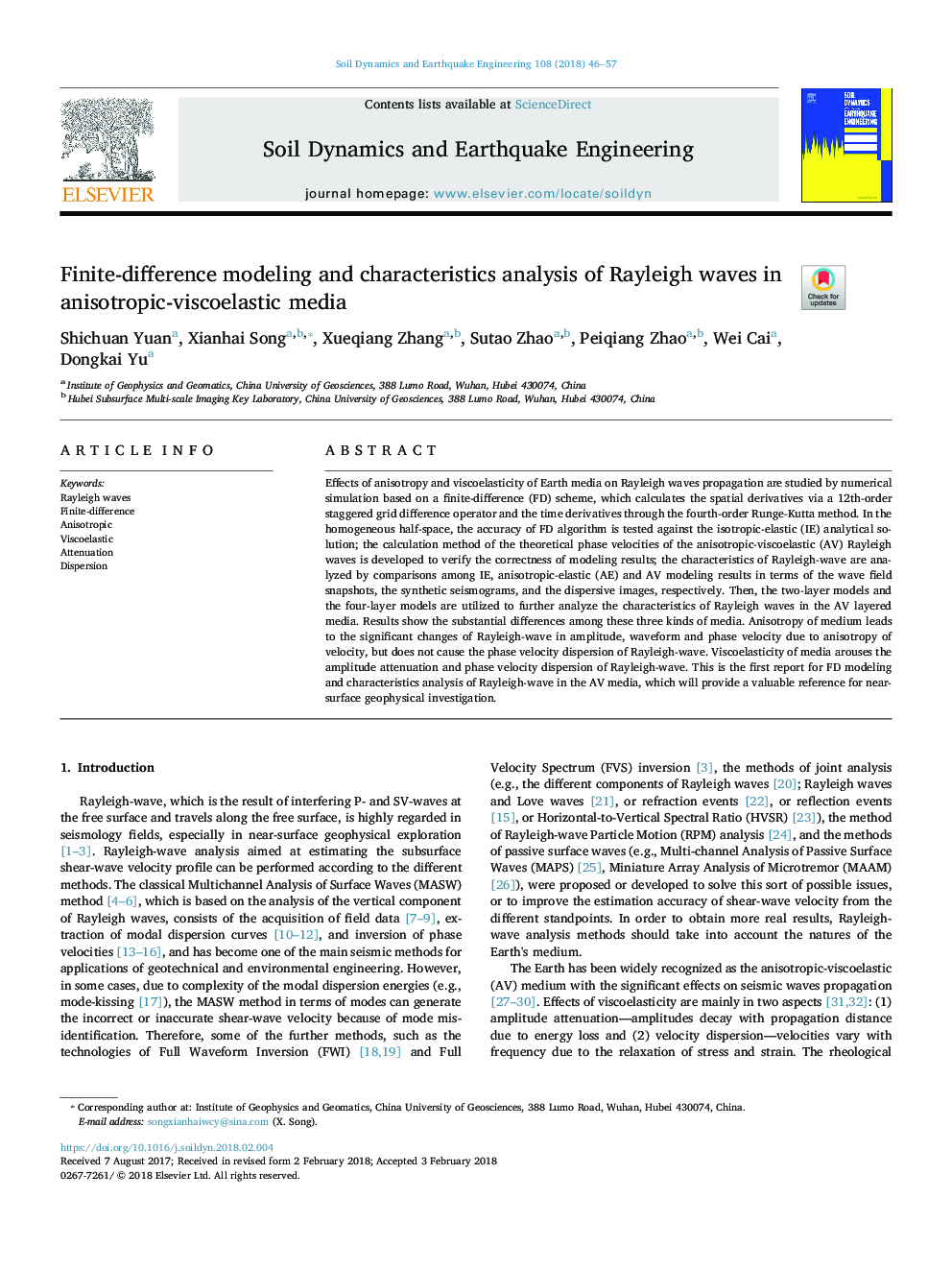| Article ID | Journal | Published Year | Pages | File Type |
|---|---|---|---|---|
| 6770489 | Soil Dynamics and Earthquake Engineering | 2018 | 12 Pages |
Abstract
Effects of anisotropy and viscoelasticity of Earth media on Rayleigh waves propagation are studied by numerical simulation based on a finite-difference (FD) scheme, which calculates the spatial derivatives via a 12th-order staggered grid difference operator and the time derivatives through the fourth-order Runge-Kutta method. In the homogeneous half-space, the accuracy of FD algorithm is tested against the isotropic-elastic (IE) analytical solution; the calculation method of the theoretical phase velocities of the anisotropic-viscoelastic (AV) Rayleigh waves is developed to verify the correctness of modeling results; the characteristics of Rayleigh-wave are analyzed by comparisons among IE, anisotropic-elastic (AE) and AV modeling results in terms of the wave field snapshots, the synthetic seismograms, and the dispersive images, respectively. Then, the two-layer models and the four-layer models are utilized to further analyze the characteristics of Rayleigh waves in the AV layered media. Results show the substantial differences among these three kinds of media. Anisotropy of medium leads to the significant changes of Rayleigh-wave in amplitude, waveform and phase velocity due to anisotropy of velocity, but does not cause the phase velocity dispersion of Rayleigh-wave. Viscoelasticity of media arouses the amplitude attenuation and phase velocity dispersion of Rayleigh-wave. This is the first report for FD modeling and characteristics analysis of Rayleigh-wave in the AV media, which will provide a valuable reference for near-surface geophysical investigation.
Related Topics
Physical Sciences and Engineering
Earth and Planetary Sciences
Geotechnical Engineering and Engineering Geology
Authors
Shichuan Yuan, Xianhai Song, Xueqiang Zhang, Sutao Zhao, Peiqiang Zhao, Wei Cai, Dongkai Yu,
